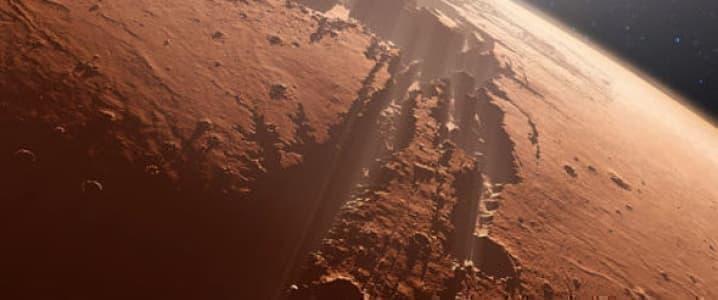Colonizing Mars Is No Longer A Dream
Authored by Irina Slav via OilPrice.com,
The idea of colonizing Mars left the sphere of speculation a long time ago, and it’s taking long strides towards a reality. In fact, scientists are now at the stage of devising ways to make a Mars colony self-sufficient. According to one recent study, this self-sufficiency will depend on insects and high-calorie crops grown in tunnels.
Food, it appears, will be the biggest challenge, according to planetary scientist Kevin Cannon, who spoke to Space.com about the work he and his colleagues from the University of Central Florida are doing on Mars colonization.
The idea of colonizing Mars centers around making this colony self-sufficient rather than reliant on imports. While energy can be sourced locally—using solar installations and nuclear reactors, apparently—food would be more difficult to grow locally. Luckily for the future Mars settlers, technology has advanced sufficiently to make lab-grown meat one possibility. Not so luckily, insects will also have to be part of the menu.
“Bugs are the way to go, if people can get over the gross factor,” Cannon told Space.com. Insects, according to the researchers, offer a very attractive ratio between the amount of calories they can offer and the amount of water and food they need.
That’s why the team included cricket farms in their model for a self-sufficient Mars colony with a population of one million.
Besides the tiny six-legged packs of calories, Cannon’s team also factored in lab-grown protein: anything from chicken meat to fish and algae, according to Cannon, is now possible to grow in the lab and it’s not that expensive, either. In just two years, the cost of a hamburger patty has fallen from over $300,000 to just $11 thanks to generous investments in this particular technology for making meat substitutes.
Why not just transport some farm animals and keep them for milk, dairies, and meat? Because the transportation itself would be a challenge, and feeding them on Mars would be another challenge, according to Cannon. Mars’s soil is not like Earth’s, which is why even plants for humans may need to grow in tunnels rather than in greenhouses outside.
“If you want to feed a large population on another planet, you have to move away from the idea of watery vegetables and really think about the tremendous amounts of energy, water and raw materials needed to produce enough calories,” Cannon told Space.com, noting that most research on Martian settlement has focused on food grown to feed astronauts, but has underestimated the amount of space, water, and sunlight that many plants need.
The team has estimated that with cricket farms and some 9,000 miles of tunnels for growing vegetables, a colony of a million people could achieve self-sufficiency within a century. While this happens, a lot of food would need to be imported from Earth and this would add to the total costs of colonizing the Red Planet. In the meantime, most Martian settlers would need to overcome the common human aversion to eating insects. Lab-grown burgers would certainly help.
Tyler Durden
Fri, 09/27/2019 – 19:05
via ZeroHedge News https://ift.tt/2mqjsv7 Tyler Durden
